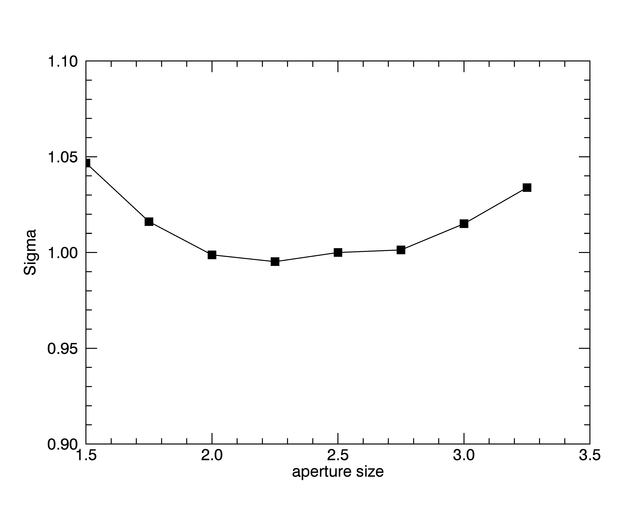IRAC High Precision Photometry
There is an optimal aperture size to use which is bound on the small side by wanting to include enough target flux and on the large size by the inclusion of too much background noise. The optimal size varies from observation to observation and must be tested for each dataset.
One way to determine the optimal aperture size is to look at a plot of signal to noise ratio (SNR) versus aperture size radius for a range of aperture sizes around the known FWHM of the IRAC PSF (~1.7 pixels). It is also informative to look at a plot of just the noise as a function of aperture size. Figures below show this for one example dataset from the archive. We use gain map corrected SNRs, otherwise the uncertainties are dominated by the gain variations and not by aperture size. In this case the signal is the mean corrected flux over the whole staring mode AOR, and the noise is the standard deviation of those corrected fluxes over the whole stare. The optimal aperture size for this target would be 2.25 pixels because that is where the SNR is highest and the uncertainties the lowest. Smaller aperture sizes don’t include enough of the target star flux and larger aperture sizes include too much of the background and it associated uncertainty.
Aperture size should be optimized for each individual dataset. This is likely a function of brightness and potentially nearby objects.

Figure 1: Signal to Noise Ratio versus aperture size for a target from the public archive normalized to an aperture size of 2.5 pixels in radius.

Figure 2: Flux uncertainty as a function of aperture size normalized to an aperture size of 2.5 pixels in radius.